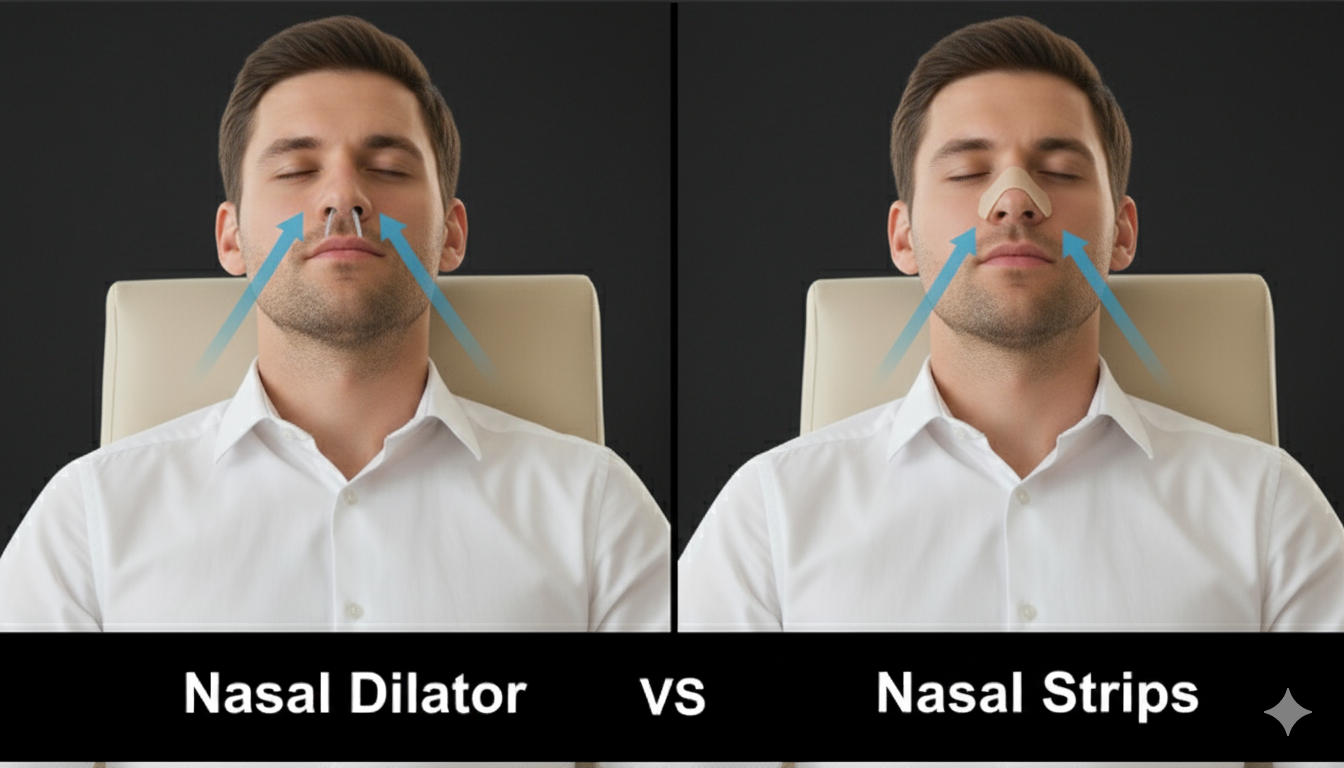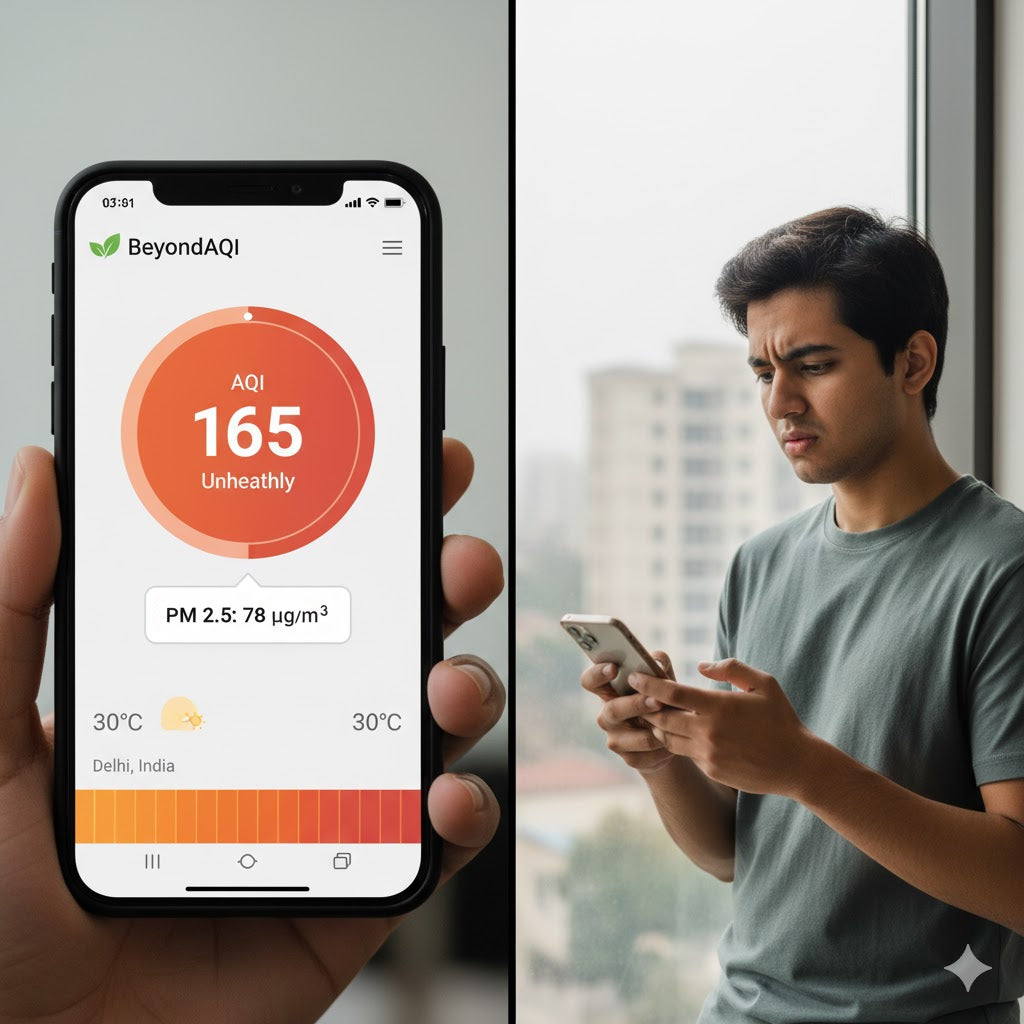Here's the thing about breathing aids - everyone has an opinion, but most people are using the wrong solution for their specific problem.
You've definitely seen ads for both nasal strips and those little dilator things, right? They promise to fix everything - your snoring, your running, basically your entire breathing life. But here's what I want to know: do they actually work, or is it just clever marketing? And honestly, even if they do work, which one's going to work for your specific nose situation?
Look, I've tested both extensively (my partner can confirm the snoring experiments), and the answer isn't as straightforward as most reviews make it seem. Breathing aids aren't one-size-fits-all solutions, despite what the marketing suggests.
So let's cut through the hype and figure out what'll actually help you breathe better tonight.
Understanding Your Breathing Challenges First
Before we dive into products, let's talk about YOUR breathing. Because honestly? The best anti-snoring device in the world won't help if you're treating the wrong problem.
Nasal blockages come in different flavors:
- Structural stuff - like when your septum's crooked or you just got dealt narrow nasal passages
- Inflammatory issues from allergies or that chronic stuffiness that never seems to go away
- Temporary problems like when you're fighting a cold or your nose decides to revolt mid-workout
- Sleep-position related restrictions
Natural congestion relief for better sleep starts with understanding what's actually blocking your airways. That stuffy feeling during allergy season? Completely different from the restriction you feel when lying flat.
And here's what most people miss - your breathing needs change throughout the day. What works for your morning run might be useless for nighttime snoring. Activity-related breathing differs dramatically from sleep breathing patterns.
Your individual anatomy matters too. Some people have naturally narrow nasal passages, others deal with enlarged turbinates, and some just have unfortunate genetics. One size definitely doesn't fit all noses.
Nasal Strips Explained: How They Work
Best nasal strips for snoring work like tiny suspension bridges for your nostrils. The embedded spring bands create outward tension that mechanically lifts nasal passages open from the outside.
 Think of it this way - your nasal passages naturally want to collapse inward, especially when you're lying down or during intense exercise. Nasal strips fight that tendency by providing constant upward lift.
Think of it this way - your nasal passages naturally want to collapse inward, especially when you're lying down or during intense exercise. Nasal strips fight that tendency by providing constant upward lift.
Modern silicone nasal strips comfort fit technology has solved most of the early comfort issues. No more feeling like you've got industrial tape stuck to your face. The newer materials flex with your skin movement and breathe better during sleep.
Here's what's cool about the external approach:
- Works immediately upon application
- Provides consistent opening force all night
- Visible proof it's working (you can literally see the lift)
- No foreign objects inside your nose
Reusable nasal opener device versions take this concept further, using medical-grade adhesives that can be cleaned and reapplied multiple times.
But here's the catch - they only work if your blockage is in the front part of your nasal passages. If your congestion is deeper inside, external lifting won't help much.
Nasal Dilators Breakdown: The Internal Solution
Nasal dilators work from the inside out. Instead of lifting from your skin, they push your nasal passages open from within.
The mechanism is elegantly simple - soft, flexible prongs expand once inserted, creating gentle outward pressure against your nasal walls. Magnetic nasal clip versions use magnetic force to maintain this expansion without requiring deep insertion.
Silicone nose clip designs sit just inside your nostrils, expanding the narrowest part of your nasal passages where most congestion occurs. They're practically invisible once in place.

Benefits of the internal approach:
- Targets the exact point of restriction
- No adhesive or skin irritation
- Completely reusable (with proper cleaning)
- Works for deeper nasal blockages
- Invisible during use
The learning curve is steeper, though. Finding the right size and insertion depth takes practice. And some people just can't get comfortable with anything inside their nose, even temporarily.
Head-to-Head Comparison: Performance & Comfort
Let's get real about effectiveness. Breathing aids for athletes need to perform under stress, while sleep solutions prioritize all-night comfort.
For immediate opening power, nasal strips usually win. The external lift provides maximum expansion, especially for people with severe nighttime congestion. Nose breathing hacks for athletes often favor strips because they deliver instant results during high-intensity exercise.
 Comfort during sleep tells a different story. Dilators edge ahead here because there's no adhesive to irritate sensitive skin, and nothing to peel off in the morning. Your pillowcase won't get sticky residue either.
Comfort during sleep tells a different story. Dilators edge ahead here because there's no adhesive to irritate sensitive skin, and nothing to peel off in the morning. Your pillowcase won't get sticky residue either.
Staying power during movement heavily favors nasal strips. They're literally attached to your face, so they move with you. Dilators can shift or fall out during intense exercise or restless sleep.
Oxygen enhancer for sleep effectiveness depends on your specific anatomy. Strips work better for front-of-nose blockages, while dilators excel at addressing deeper restrictions.
Specific Use Cases: When to Choose What
For Sleep Problems:
Chronic snoring with narrow external passages? Go with nasal strips. The constant external lift counteracts gravity's effect when you're horizontal. Sleep aid nasal solution approaches work best when they target your specific sleep position restrictions.
Sleep apnea users often prefer dilators because they don't interfere with CPAP masks and provide consistent internal support throughout the night.
For Exercise:
Breathing aids for athletes work best with nasal strips when you're really pushing it. They actually stick to your face even when you're dripping sweat, and honestly? When you're gasping for air during those last brutal reps, you want every bit of airflow you can get. Ask any runner, cyclist, or Cross Fitter - strips win for workout performance every time.
Breathing aids for yoga practitioners actually prefer dilators. The internal support doesn't interfere with different head positions, and there's no adhesive to worry about during heated sessions.
For Daily Life:
Chronic congestion from allergies responds better to dilators. They provide consistent relief without the daily skin irritation from adhesive strips. Office workers love them because they're invisible and comfortable for 8+ hour wear.
Stop snoring solutions without surgery during travel favor strips. They're lighter, take up less space, and don't require cleaning supplies.
Cost Analysis: Short-term vs. Long-term Investment
Initial purchase prices tell only part of the story. Quality nasal strips run ₹40-₹120 per use, while reusable nasal opener devices cost ₹500-₹1000 upfront.
Do the math based on your usage:
- Nightly use: Dilators pay for themselves in 2-4 weeks
- Occasional use: Strips make more financial sense
- Athletic use: Strips for races, dilators for daily training
- Travel: Strips for convenience, dilators for extended trips
Silicone nasal strips comfort fit reusable versions bridge this gap, lasting 7-10 uses before replacement. They're perfect for testing whether external lift works for you without long-term commitment.
Quality matters more than price. Cheap strips fall off, cheap dilators break. Invest in proven brands for consistent results.
User Experience: Real Reviews and Results
Best nasal strips for snoring consistently score high for immediate effectiveness but lower for skin comfort. Users report significant snoring reduction but complain about morning residue and occasional skin irritation.
Nasal dilator reviews split dramatically. People either love them or can't tolerate them -- there's not much middle ground. Comfort ratings vary wildly based on individual anatomy and sensitivity.
Common strip complaints:
- Skin irritation after multiple nights
- Adhesive residue on nose and pillow
- Occasional nighttime detachment
- Higher ongoing costs
Common dilator complaints:
- Initial discomfort learning proper insertion
- Occasional shifting during sleep
- Cleaning and maintenance requirements
- Limited size options
Success stories favor specific use cases. Athletes rave about strips for competition, while chronic congestion sufferers prefer dilators for daily relief.
Making Your Decision: The Selection Framework
Start with your primary problem:
Occasional snoring or exercise breathing? Try nasal strips first. They're easier to use and provide immediate feedback on effectiveness.
Chronic daily congestion? Start with a quality nasal dilator. The reusable nature and internal support work better for ongoing issues.
Both sleep and exercise needs? Get both. Use strips for workouts and races, dilators for daily comfort and sleep.
Sensitive skin or adhesive allergies? Dilators are your only realistic option for regular use.
Trial recommendations: Most brands offer satisfaction guarantees. Start with small packs or single units before committing to bulk purchases. Your nose will tell you what works within the first few nights.
Red flags requiring medical consultation include sudden breathing changes, persistent congestion despite treatments, or breathing issues affecting sleep quality despite using aids properly.
Your Perfect Breathing Solution Awaits
Here's the bottom line - both breathing aids work, but they work for different problems and different people.
Nasal strips excel at providing immediate, maximum airway opening for occasional use, exercise, and severe nighttime congestion. Perfect for those "I can't deal with another bad night" emergencies. But dilators? They're better for the long game - daily stuffiness, sensitive skin, or when you're tired of peeling adhesive residue off your nose every morning.
Most people benefit from having both options available. Your breathing needs change with seasons, activity levels, and health status. Having the right tool for each situation beats forcing one solution to handle everything.
The real win? Finally breathing easily through your nose instead of gasping through your mouth all night. Whether that happens with strips, dilators, or both doesn't matter -- what matters is waking up refreshed instead of exhausted.
Your nose (and your sleep partner) will thank you.






Share:
Link Between Poor Breathing and Daytime Fatigue
Top 7 Natural Ways to Stop Snoring